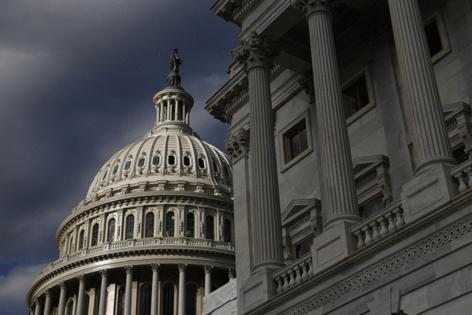Editorial: Please take the threat of a fiscal breakdown seriously
Published in Op Eds
The latest projections from the Congressional Budget Office repeat a warning made many times before: The trajectory of US government borrowing is unsustainable. Washington, fixated on this year’s elections, isn’t merely unwilling to act; it’s ignoring the issue altogether. Just how concerned should the country be about this dereliction of duty?
Like all economic forecasts, fiscal projections are usually wrong, and the fiscal crunch that the CBO warns is coming might never happen. Equally, what lies ahead could be even scarier. A reckoning of the chances of better or worse outcomes is therefore valuable. Analysts have undertaken such an exercise for Bloomberg’s Big Take, and the conclusion isn’t reassuring.
The authors, from Bloomberg Economics, take the new CBO projection as the baseline. This shows public debt rising from just under 100% of gross domestic product this year — the highest since the end of World War II — to 116% in 2034. At the outset, they note that this disturbing baseline is actually pretty optimistic in three ways.
First, it’s a “current law” projection, which assumes that tax cuts enacted by Donald Trump’s administration in 2017 will expire on schedule by 2025. Regardless of this year’s election results, that’s unlikely. Second, toward the end of the forecast period, the projection assumes falling defense spending as a share of GDP. Given current geopolitical tensions, this too looks improbable. Third, the CBO expects interest rates (which drive debt-servicing costs) to be slightly lower than financial markets currently suggest. All these assumptions are material: Plug in market-implied rates, for instance, while letting the other two assumptions stand, and the baseline debt ratio rises to 123% of GDP by 2034.
Yet those aren’t the only things that might change. Using so-called stochastic simulations, the exercise examined the spread of future debt-to-GDP ratios around the agency’s baseline, running a model of the economy a million times with different combinations of economic growth, inflation, budget deficits and interest rates, with patterns drawn from historical data. In nearly 90% of cases, the debt ratio keeps rising over the course of the coming decade — and in that sense is unsustainable, as in the baseline. In the worst 5% of cases, the ratio soars above 139% by 2034 and keeps on climbing.
The bottom line is simple: Take the CBO’s projections seriously but not literally. The numbers won’t be right, but uncertainty runs both ways, and outcomes could just as easily be worse than expected as well as better. The warning of eventual fiscal breakdown stands, and responsible politicians would be doing something about it.
____
The Editorial Board publishes the views of the editors across a range of national and global affairs.
©2024 Bloomberg L.P. Visit bloomberg.com/opinion. Distributed by Tribune Content Agency, LLC.







Comments